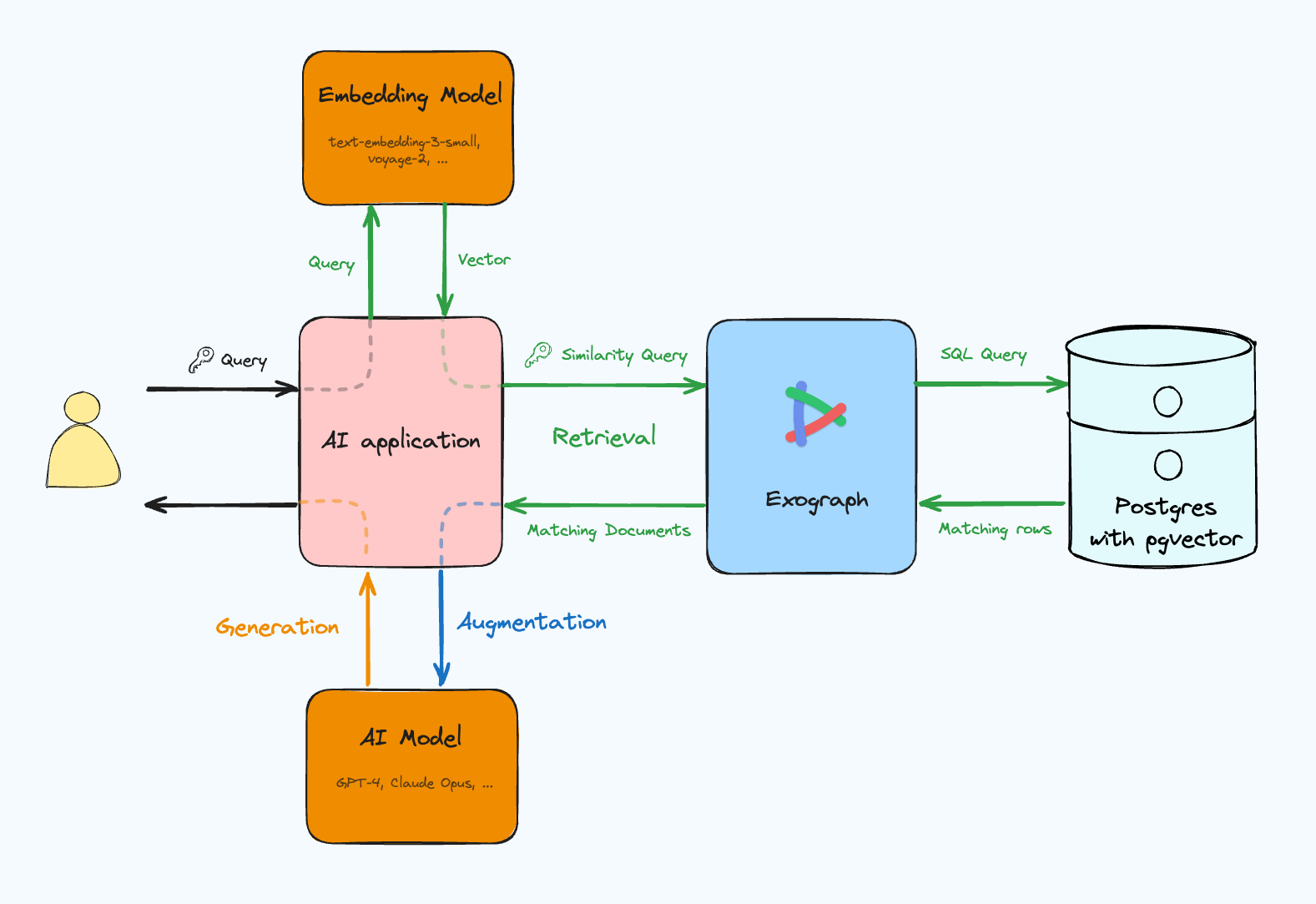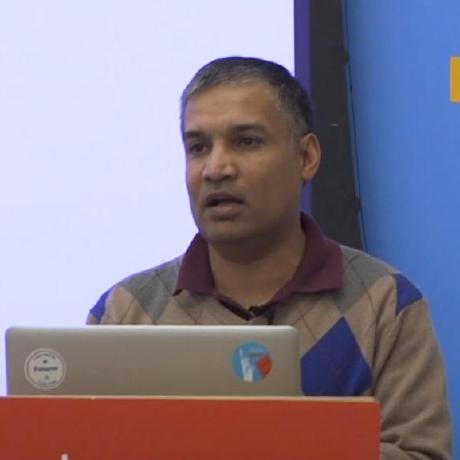Exograph supports pgvector for embeddings
We are happy to introduce Exograph's first integration with AI: embedding support through the pgvector extension. This new feature allows storing and querying vector representations of unstructured data directly in your Postgres database. It complements other Exograph features like access control, indexing, interceptors, and migrations, simplifying the development of AI applications.
Embeddings generated by AI models from OpenAI, Claude, Mistral, and others condense the semantic essence of unstructured data into a small-size vector. The distance between two vectors indicates the similarity of the corresponding data. This capability opens up many possibilities, such as building recommendation systems, classifying data, and implementing AI techniques like RAG (Retrieval Augmented Generation).
Exograph's access control mechanism ensures that the search results are filtered based on the user's access rights. For example, when implementing a RAG application, Exograph ensures that it retrieves and feeds the AI model only the documents the user can access. Access control at the data model level eliminates a source of privacy issues in AI applications.

In this blog post, we will explore the concept of embeddings and how Exograph supports it.



